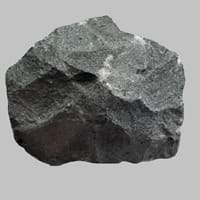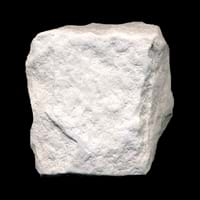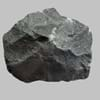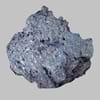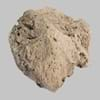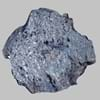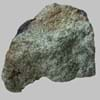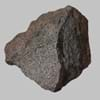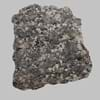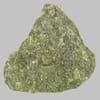Definition
Latite is an igneous, volcanic rock, with aphanitic-aphyric to aphyric-porphyritic texture
Diatomite is a fine-grained sedimentary rock which is formed from consolidated diatomaceous earth
Discoverer
Unknown
Unknown
Etymology
From the Latin word latium
From diatom + -ite1
Class
Igneous Rocks
Sedimentary Rocks
Sub-Class
Durable Rock, Medium Hardness Rock
Durable Rock, Soft Rock
Group
Volcanic
Not Applicable
Other Categories
Fine Grained Rock, Opaque Rock
Fine Grained Rock, Opaque Rock
Texture
Aphanitic to Porphyritic
Clastic or Non-Clastic
Color
Black, Brown, Colourless, Green, Grey, Pink, White
Grey, White, Yellow
Durability
Durable
Non-Durable
Interior Uses
Decorative Aggregates, Entryways, Interior Decoration
Decorative Aggregates, Homes, Interior Decoration
Exterior Uses
As Building Stone, As Facing Stone, Garden Decoration, Office Buildings
Garden Decoration, Paving Stone
Other Architectural Uses
Curbing
Curbing
Construction Industry
As a Flux in the Production of Steel and Pig Iron, As a Sintering Agent in Steel Industry to process Iron Ore, As Dimension Stone, Cement Manufacture, for Road Aggregate, Making natural cement, Manufacture of Magnesium and Dolomite Refractories
As Dimension Stone, Cement Manufacture, Construction Aggregate, for Road Aggregate, Landscaping, Making natural cement, Source of calcium
Medical Industry
Not Yet Used
Not Yet Used
Antiquity Uses
Artifacts, Monuments, Sculpture
Artifacts
Commercial Uses
An Oil and Gas Reservoir, As a Feed Additive for Livestock, Metallurgical Flux, Soil Conditioner, Source of Magnesia (MgO)
Alumina Refineries, Animal feed filler, As a Feed Additive for Livestock, Creating Artwork, Drawing on blackboards, Fire resistant, Gymnasts, athletes and mountain climbers use for grip, In aquifers, Soil Conditioner, To ignite fire, Used as a filter medium, Used as an insecticide, Whiting material in toothpaste, paint and paper
Types
Rhomb porphyries
Not Available
Features
Host Rock for Lead
Clasts are smooth to touch, Is one of the oldest rock, Smooth to touch, Very fine grained rock
Archaeological Significance
Monuments
Used
Not Yet Used
Famous Monuments
Data Not Available
Not Applicable
Sculpture
Used
Not Yet Used
Famous Sculptures
Data Not Available
Not Applicable
Figurines
Used
Not Yet Used
Formation
Latite is a fine-grained, hard rock which is a type of metasomatite, essentially altered basalt. It forms with or without crystallization, either below the surface as intrusive rocks or on the surface as extrusive rocks.
Diatomite rock formed from the skeletal remains of single celled plants called diatoms. When diatoms die, their skeletal remains sink to the bottom of lakes and oceans etc. hence forming diatomite deposit.
Mineral Content
Alkali feldspar, Biotite, Plagioclase, Pyroxene
Calcite, Clay, Clay Minerals, Quartz, Sand
Compound Content
CaO, Cl, MgO
Ca, NaCl, CaO
Types of Metamorphism
Burial Metamorphism, Cataclastic Metamorphism
Not Applicable
Types of Weathering
Biological Weathering, Chemical Weathering, Mechanical Weathering
Biological Weathering, Chemical Weathering, Mechanical Weathering
Types of Erosion
Chemical Erosion, Water Erosion, Wind Erosion
Chemical Erosion, Coastal Erosion, Wind Erosion
Grain Size
Fine Grained
Very fine-grained
Fracture
Conchoidal
Not Available
Porosity
Very Less Porous
Highly Porous
Luster
Subvitreous to Dull
Dull
Compressive Strength
Not Available
Cleavage
Perfect
Non-Existent
Specific Gravity
2.86
2.3-2.4
Transparency
Translucent
Opaque
Density
2.8-2.9 g/cm3
2.49-2.51 g/cm3
Resistance
Heat Resistant, Pressure Resistant
Heat Resistant
Deposits in Eastern Continents
Asia
Not Yet Found
Brunei, India, Indonesia, Malaysia, Singapore, Thailand, Vietnam
Africa
Not Yet Found
Cameroon, Chad, Ghana, Kenya, Malawi, Sudan, Tanzania, Togo, Zambia, Zimbabwe
Europe
Bulgaria
England, France, Germany, Spain, United Kingdom
Others
Not Yet Found
Not Yet Found
Deposits in Western Continents
North America
USA
Canada, USA
South America
Not Yet Found
Colombia
Deposits in Oceania Continent
Australia
Not Yet Found
Adelaide, New Zealand, Queensland, Tonga, Victoria, Yorke Peninsula
All about Latite and Diatomite Properties
Know all about Latite and Diatomite properties here. All properties of rocks are important as they define the type of rock and its application. Latite belongs to Igneous Rocks while Diatomite belongs to Sedimentary Rocks.Texture of Latite is Aphanitic to Porphyritic whereas that of Diatomite is Clastic or Non-Clastic. Latite appears Rough and Diatomite appears Soft. The luster of Latite is subvitreous to dull while that of Diatomite is dull. Latite is available in black, brown, colourless, green, grey, pink, white colors whereas Diatomite is available in grey, white, yellow colors. The commercial uses of Latite are an oil and gas reservoir, as a feed additive for livestock, metallurgical flux, soil conditioner, source of magnesia (mgo) and that of Diatomite are alumina refineries, animal feed filler, as a feed additive for livestock, creating artwork, drawing on blackboards, fire resistant, gymnasts, athletes and mountain climbers use for grip, in aquifers, soil conditioner, to ignite fire, used as a filter medium, used as an insecticide, whiting material in toothpaste, paint and paper.
